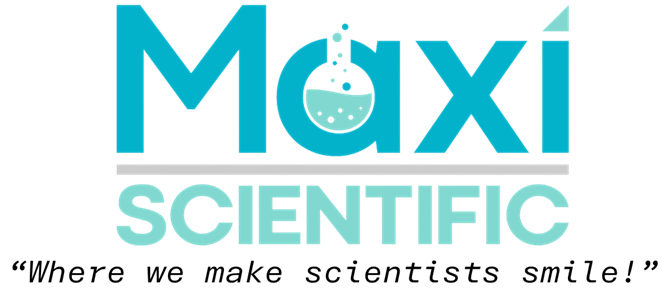Lab Managers! How to Run a More Organized and Efficient Lab
Posted by Maxi Scientific on Jan 5th 2025
In any laboratory, organization and efficiency are key to producing high-quality results, meeting deadlines, and maintaining safety. Whether you’re managing a small academic lab or a large commercial operation, streamlining processes and fostering a culture of organization can make all the difference. Here are actionable tips to help you run a more organized and efficient lab.
1. Establish Clear Lab Protocols
Consistency is crucial for efficiency. Develop clear standard operating procedures (SOPs) for routine tasks such as sample preparation, equipment maintenance, and data recording. Make these documents easily accessible to all lab personnel, either as printed copies or through a shared digital platform.
Best Practices:
- Regularly review and update SOPs to reflect any procedural changes.
- Conduct training sessions to ensure everyone follows the same protocols.
2. Organize Lab Space for Workflow Optimization
An efficient lab layout minimizes unnecessary movement and ensures that all equipment and supplies are readily accessible.
Tips:
- Group related equipment and supplies by task (e.g., create separate zones for sample preparation, analysis, and data processing).
- Use labeled storage bins and shelves to keep workspaces clutter-free.
- Implement a “first in, first out” (FIFO) system to manage consumables and avoid expired reagents.
3. Leverage Technology
Digital tools can significantly enhance lab efficiency by automating repetitive tasks and centralizing data management.
Suggestions:
- Use a Laboratory Information Management System (LIMS) to track samples, manage data, and streamline reporting.
- Automate data acquisition from instruments to reduce manual entry errors.
- Schedule reminders for equipment calibration and maintenance.
4. Implement an Inventory Management System
Running out of critical supplies can disrupt workflows, while overstocking can waste valuable resources. A robust inventory management system helps you strike the right balance.
How to Get Started:
- Use inventory management software to monitor stock levels in real time.
- Set reorder thresholds and automate purchase orders for commonly used items.
- Conduct regular inventory audits to ensure accuracy.
5. Promote Effective Communication
Clear communication ensures that all team members are aligned and working toward the same goals.
Strategies:
- Hold weekly lab meetings to discuss progress, challenges, and upcoming tasks.
- Use shared digital tools, like Slack or Microsoft Teams, to facilitate real-time communication.
- Maintain a shared calendar for project timelines, equipment bookings, and important deadlines.
6. Streamline Sample Management
Misplaced or mislabeled samples can lead to wasted time and resources. Implementing a systematic approach to sample management is essential.
Recommendations:
- Label all samples with clear, consistent identifiers, such as barcodes or QR codes.
- Store samples in designated areas with proper temperature and humidity controls.
- Maintain detailed records for sample location, storage conditions, and analysis status.
7. Train and Empower Your Team
A well-trained, motivated team is the backbone of an efficient lab. Invest in their development to improve both productivity and morale.
Steps to Take:
- Provide ongoing training on new techniques, equipment, and safety protocols.
- Encourage team members to share ideas for improving workflows.
- Recognize and reward exceptional performance to boost motivation.
8. Prioritize Safety and Compliance
Safety and efficiency go hand in hand. A safe lab minimizes disruptions caused by accidents and ensures compliance with regulatory standards.
Safety Measures:
- Conduct regular safety audits and address any issues immediately.
- Ensure all personnel are trained in emergency procedures and proper use of personal protective equipment (PPE).
- Keep safety data sheets (SDS) for all chemicals easily accessible.
9. Monitor and Optimize Workflow
Continuous improvement is key to maintaining efficiency. Periodically assess your lab’s workflows and identify bottlenecks or areas for improvement.
How to Approach This:
- Use time-tracking tools to measure the duration of routine tasks.
- Seek feedback from team members on what processes could be improved.
- Implement changes incrementally and monitor their impact before scaling up.
10. Foster a Culture of Accountability
Empowering team members to take ownership of their responsibilities creates a more cohesive and efficient lab environment.
Encouragement Tips:
- Assign specific roles and responsibilities to each team member.
- Set clear performance metrics and review them regularly.
- Encourage open discussions about challenges and collaboratively find solutions.
